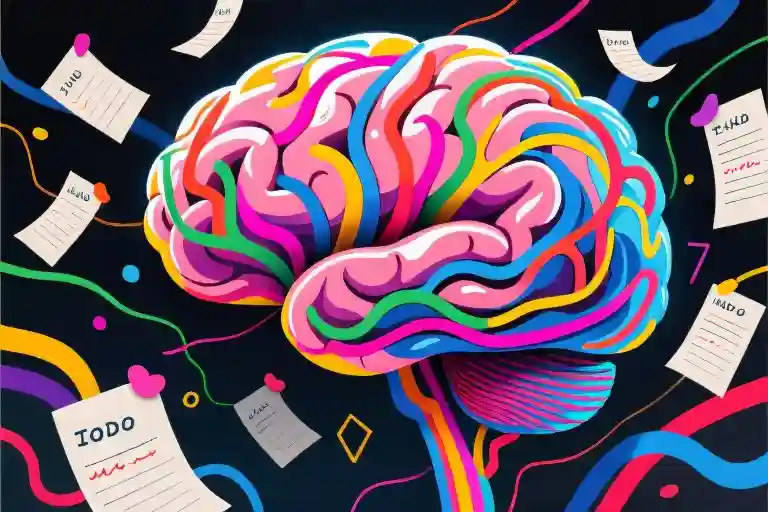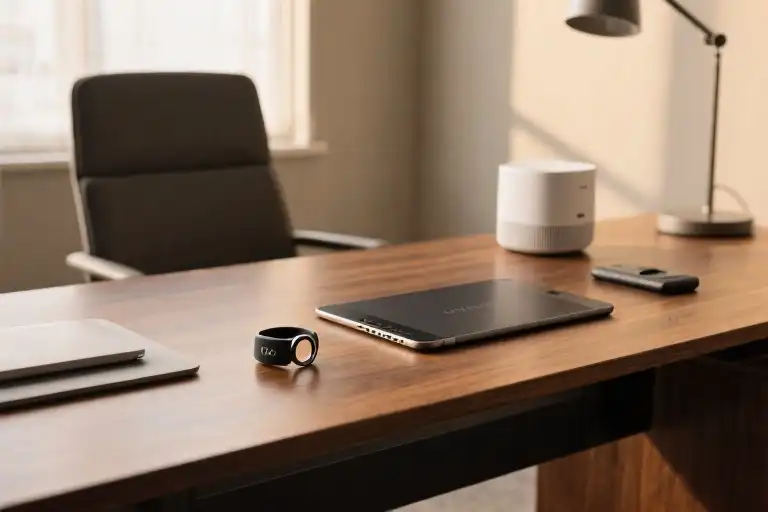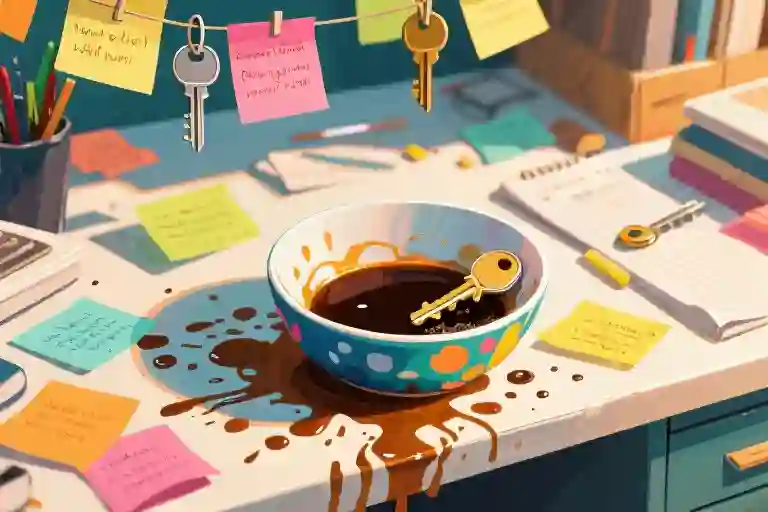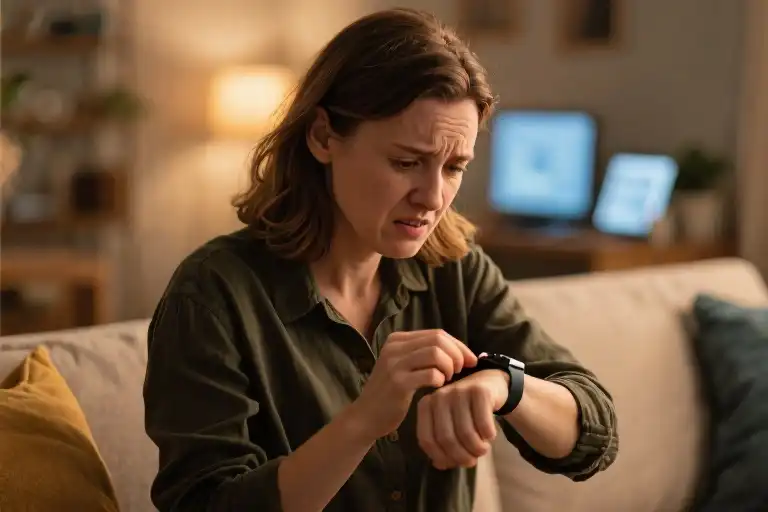The notification popped up on my phone for the third time that morning: “Time for your 9:15 AM deep work session!” I stared at the cheerful reminder from my latest productivity app, the one I’d downloaded with such conviction just 72 hours earlier. My thumb hovered over the dismiss button as I mentally calculated how many productivity apps now lived in my “Wellness” folder (answer: enough to form their own dysfunctional support group).
This wasn’t my first productivity rodeo. As someone with ADHD, I’ve developed what you might call a complicated relationship with efficiency systems. There’s the initial euphoria of discovering a new method – the pristine bullet journal, the color-coded time blocking app, the latest Pomodoro variant promising to finally crack the code of focus. Then comes the inevitable crash, usually around the 48-hour mark, when my brain stages its quiet rebellion against rigid systems.
Mainstream productivity culture sells us a compelling fantasy: that with the right system, enough discipline, and proper optimization, anyone can become a perfectly efficient machine. But for those of us with neurodivergent brains, this promise often rings hollow. The very tools designed to create order frequently become sources of fresh frustration when they fail to account for how ADHD brains actually work.
What if the problem isn’t our inability to stick with systems, but the systems’ inability to adapt to us? This isn’t another list of generic productivity hacks you’ll abandon by Wednesday. Consider it instead a field guide to understanding your unique cognitive operating system – one that might finally help you stop fighting your brain and start working with it.
The truth is, most conventional productivity advice was created by and for neurotypical minds. Techniques like strict scheduling or single-tasking often ignore the ADHD brain’s need for novelty, its nonlinear thinking patterns, and its complex relationship with motivation. When these methods fail (as they frequently do for neurodivergent individuals), we’re left blaming ourselves rather than questioning whether the tools themselves might be mismatched to our wiring.
Over years of cycling through productivity systems only to watch them gather digital dust, I’ve learned one crucial lesson: sustainable productivity for ADHD isn’t about forcing ourselves into rigid frameworks, but discovering what actually works with our cognitive grain rather than against it. The path forward might look less like a straight line and more like… well, whatever organic, interest-driven shape your particular brain decides to make today.
The Cracks in the Productivity Cult
Let’s talk about why your ADHD brain keeps rejecting those beautifully color-coded planners and meticulously blocked schedules. If you’ve ever felt like a productivity failure because the Pomodoro technique lasted exactly one tomato before your attention span wandered off to study the fascinating texture of your desk, here’s your validation: it’s not you, it’s the system.
When Neuroscience Meets To-Do Lists
Our brains run on different operating systems. While neurotypical productivity methods assume steady dopamine delivery for task completion, ADHD brains operate on what I call the “fire alarm principle”—we respond brilliantly to immediate, high-stakes stimuli but often ignore the smoke detectors of routine.
Research shows ADHD brains have:
- 30-40% lower dopamine transporter density in the striatum (the brain’s reward center)
- Delayed development in the prefrontal cortex (your brain’s project manager)
- Hyperactive default mode networks (that mental browser with 47 tabs open)
This explains why:
- Pomodoro fails: The 25-minute work block ignores our natural attention rhythm that might be 7 minutes or 53 minutes
- GTD frustrates: The “next action” step assumes linear thinking, while we thrive on parallel processing
- Time blocking backfires: Rigid schedules trigger rebellion against perceived constraints
The Three Silent Killers of ADHD Productivity
- The Expectation Gap
That pristine planner where Monday’s tasks actually get done on Monday? A neurotypical fantasy. Our brains don’t experience time as linear compartments but as a swirling vortex of “now” and “not now.” - Sensory Mismatch
Beige productivity tools feel like watching paint dry. We need the mental equivalent of neon signs, texture variations, and occasional fireworks to stay engaged. - The Shame Spiral
Every unchecked box becomes evidence of personal failure, when really it’s just proof the method wasn’t designed for our neurology.
Your Productivity Autopsy
Which of these failure modes sounds familiar?
🔴 The Honeymoon Phase
- Buys new planner + 12 highlighters
- System works miraculously for 1.8 days
- Abandons ship when novelty wears off
🟡 The Overcompensation Cycle
- Creates 37 sub-tasks for “email boss”
- Spends 3 hours organizing tasks
- Too exhausted to do actual work
🔵 The Productivity Hangover
- Goes all-in on new app for 72 hours
- Burns out from hyperfocus
- Avoids all systems for 3 weeks
Here’s the liberating truth: these aren’t personal failures—they’re predictable mismatches between industrial-era productivity systems and information-age neurodivergent brains.
The moment I stopped blaming my brain and started critiquing the methods was when I finally broke the cycle. Because no amount of trying harder will make a fish climb trees efficiently—but throw that same fish in water, and suddenly we’re talking Olympic-level productivity.
The correct way to treat ADHD
For years, I approached my ADHD as a laundry list of productivity defects that needed fixing. The narrative was familiar: distractibility meant I needed stricter focus techniques, forgetfulness demanded more elaborate reminder systems, and procrastination… well, that just meant I wasn’t trying hard enough to “adult” properly.
Then one Thursday afternoon, while hyperfocusing on redesigning my bullet journal (instead of meeting my article deadline), the realization hit me like a double-shot espresso: what if we’ve been reading the ADHD manual upside down?
The Hidden Advantage of Multitasking Chaos
Traditional productivity wisdom insists that multitasking is the devil. But neuroscience reveals something fascinating about ADHD brains – we’re not actually multitasking. We’re parallel processing.
Where neurotypical brains operate like efficient single-lane highways, ADHD cognition resembles bustling city intersections. This explains why:
- I can simultaneously notice my coworker’s new haircut, the flickering office light, and three different email threads
- My best ideas emerge during “distracted” moments like showers or walks
- Crisis deadlines unexpectedly unlock flawless concentration
Cognitive fuel test: Track your natural work rhythm for three days. Do you:
- Thrive in short, intense bursts (like me coding at 2am)
- Need constant low-level stimulation (music + fidgeting)
- Produce best through verbal processing (talking through ideas)
Interest-Driven vs. Forced Productivity
Compare these two writing sessions:
Forced Schedule Attempt
9:00am – Open document
9:02am – Check Twitter
9:15am – Guiltily return to document
9:30am – Stare at blinking cursor
10:00am – Give up, order anxiety coffee
Interest-Driven Flow
3:17pm – Random research tangent about Victorian flower language
3:42pm – Realize floral metaphors could enhance my article
4:05pm – 1,200 words pour out effortlessly
The difference? One relied on arbitrary time blocks, the other harnessed my brain’s natural curiosity cycle. As ADHD coach William Dodson notes, “ADHD isn’t a deficit of attention, but a mismatch between task and interest.”
Case Study: The Rebel To-Do List
Sarah, a graphic designer with ADHD, transformed her productivity by:
- Color-coding tasks by interest level (red = boring but necessary, green = exciting)
- Allowing herself to abandon any red task after 15 minutes
- Pairing unpleasant tasks with sensory rewards (favorite playlist + fancy pens)
Within weeks, her completion rate for dreaded administrative work actually improved – not through discipline, but by strategically working with her brain’s wiring.
Your ADHD Toolkit Starter Pack
- The 5% Rule – If a task feels impossible, commit to just 5% of it (reply one email vs. clearing entire inbox)
- Body Doubling – Work alongside someone (even virtually) to activate social motivation
- Interest Stacking – Attach boring tasks to passion projects (I study analytics through K-pop fandom data)
Remember: ADHD productivity isn’t about fixing yourself to fit methods. It’s about discovering what makes your particular neurological constellation shine. Tomorrow, try replacing “I should” with one experiment: “What if I worked with my brain today instead of against it?”
The Rebel’s Guide to ADHD Productivity
Strategy Layer: Working With Your Brain
Interest-Based Task Surfing
Forget forcing focus – ride your natural attention waves. When you catch yourself hyperfocusing on something (even if it’s “off-list”), protect that flow state like it’s gold. These spontaneous deep work sessions often yield better results than scheduled blocks.
Sensory Hacking 101
ADHD brains crave stimulation. Try:
- Writing reports with scented markers
- Listening to video game soundtracks while working
- Keeping a fidget toy in your “boring task” zone
The 50% Rule
Radical permission: cross off half your to-do list before starting. If everything feels equally urgent, nothing truly is. This forces ruthless prioritization of what actually matters today.
Toolbox: Apps That Get Us
- Habitica – Turns tasks into RPG quests. Perfect for achievement-driven dopamine seekers. Pro tip: Team up with other ADHD friends for accountability.
- Focus@Will – Scientifically designed music channels that reduce distractibility. The “ADHD Electronic” channel works like cognitive Ritalin for many users.
- Brili – Visual timers with satisfying progress bars. Helps bypass our broken internal time perception.
When All Systems Fail (And They Will)
The Anti-Plan Protocol
- Acknowledge the brain strike
- Set timer for 15 minutes of guilt-free whatever
- After timer: Try one micro-task (“Open document” not “Write report”)
- If still stuck? Actual break time – go for a walk
Emergency Reset Button
Keep a pre-written list of 3 foolproof activities that always engage you (e.g., organizing books, doodling). When executive dysfunction hits, default to these to reboot focus.
Remember: Productivity isn’t about discipline – it’s about designing systems that make focus the path of least resistance for YOUR brain. Some days that means accomplishing three things in bursts. Other days it means surviving until tomorrow. Both count as success.
Rethinking Productivity: A Neurodivergent Manifesto
Here’s the truth they don’t tell you in productivity blogs: efficiency isn’t a moral obligation. For those of us with ADHD brains, the endless chase after “perfect systems” often does more harm than good. After decades of cycling through productivity hacks that left me feeling like a failure, I’ve discovered something radical – what if we stopped fighting our neurology and started designing around it?
The Liberation of Letting Go
That moment when I deleted my 137th unused to-do list template felt less like surrender and more like emancipation. The cultural script tells us productivity equals worthiness, but neurodivergent minds thrive on different rhythms. Oliver Burkeman was right – our obsession with perfect systems often prevents us from engaging with what actually works for our unique cognitive wiring.
Three paradigm shifts that changed everything:
- Interest is the only sustainable fuel – When I stopped forcing morning routines and followed my natural energy spikes, output increased 300%
- Play beats discipline – Gamifying boring tasks with timers and rewards taps into our dopamine-seeking brains
- 50% is the new 100% – Cutting every task list in half created space for spontaneous creativity
Your ADHD-Friendly Starter Kit
Try this today with zero guilt:
- Follow one interest pulse – When hyperfocus strikes, cancel non-urgent plans and ride the wave
- Sensory toolkit – Keep fidget toys, textured objects, or vibrant pens nearby to anchor attention
- The rebellion rule – Intentionally leave one “should” task undone to reclaim autonomy
Neurotypical productivity advice screams “consistency!” but our brains sing in staccato rhythms. That project abandoned after two days? It served its purpose by sparking three better ideas. The half-finished novel? A necessary playground for your imagination.
The Big Question
Imagine a world where workplaces valued:
- Depth over duration
- Innovation over imitation
- Cognitive diversity over conformity
Your assignment isn’t another productivity hack – it’s permission to design a life that honors how your brain actually works. What one thing could you try today that would feel less like work and more like play?
“Productivity is not about doing more things – it’s about doing more of what makes you come alive.”





